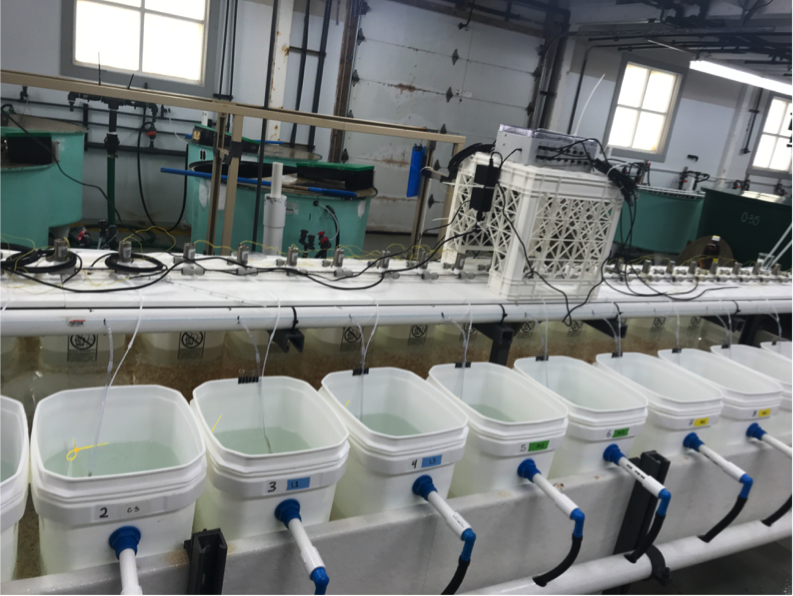High Frequency Observations of the Secondary Production Cycle in Prince William Sound

PROJECT
High Frequency Observations of the Secondary Production Cycle in Prince William Sound
High Frequency Observations of the Secondary Production Cycle in Prince William Sound
Background
There is considerable interest in moving marine resource management away from a single-species approach to a more mechanistic ecosystem approach, but that has proved to be challenging in practice given the complexity and variability of large marine ecosystems. It is thought that ecosystem-level measurements are a way to move the field forward. Technologies for measuring physical parameters (e.g. temperature and salinity) are mature, and technologies for measuring biogeochemical parameters (e.g. nitrate, phosphate) are also now available and getting better all the time. Similarly, the practice of using in situ fluorescence as a proxy for primary producer biomass is well established. The assessment of higher trophic levels, particularly fish stocks, is also mature and features an array of well-developed methods.
In high latitude ecosystems, secondary producers are mostly small zooplankton grazers. Although the dominant grazers are often crustaceans, there is a diversity of other taxa present: most every phylum within the subkingdom has a member that may be found in the plankton during at least part of their life history. Until recently, the assessment of zooplankton was done exclusively by collecting them with nets and examining the resulting samples under a microscope. This method is time consuming, expensive, and destroys fragile taxa, but is required if species-level taxonomic resolution is desired. There has been much work in recent years on new methods to enumerate zooplankton and one of the more promising methods has proved to be in situ imagery, which permits discrimination of plankton from other particules, provides a level of taxonomic resolution, as well as sizing of imaged plankton and particulates. Given the high abundance of zooplankton (from hundreds to millions of individuals per gallon), there has also been a parallel effort to develop computer vision techniques to automate the identification of those images: camera systems such as these collect for more images than can be identified manually by humans.
Methods
A plankton camera was developed for the PWS profiling mooring, based on the design of the Scripps Plankton Camera, which is deployed on the Scripps Pier. The system was designed to observe mesozooplankton and large phytoplankton, with an imaged volume of about half a liter and a pixel size of approximately 15 microns. The system collects images 4 times per second while the profiler is ascending, and does real-time extraction of regions of interest. The camera was first deployed on the profiler in 2016, and has collected over 2 million images during its 2016 and 2017 deployments. As well as allowing identification of different plankton taxa, the images are clear enough to provide information about individual plankers (e.g. gut fullness, and size of lipid reserves). Computer vision and deep learning techniques (Google Tensorflow) are being developed to automatically identify the images.
What We are Learning
Once we are able to reliably classify the different kinds of plankton images that the camera collects, we will be able to better understand how the base of the food web in PWS operates. Ultimately we will be able to produce a near real-time assessment of the annual productivity of the plankton ecosystem in PWS.
PRINCIPAL INVESTIGATOR
R.W. Campbell Ph.D.
Prince William Sound Science Center
Vox: (907) 424.5800 x241
Fax: (907) 424.5820
rcampbell@pwssc.org
RESEARCH PERIOD
2015-2018




